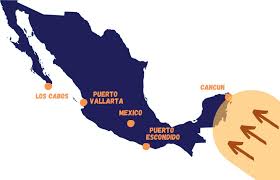The Growing Concern of Sargasses in Our Oceans

Introduction
Sargasses, a type of brown seaweed, have become a growing concern for coastal communities across the globe. These drifting mats of vegetation, primarily made up of the Sargassum species, have been increasingly observed in our oceans. Their proliferation not only affects marine ecosystems but also poses significant challenges for tourism and fishing industries. Understanding the impact of sargasses on both the environment and local economies is crucial as we navigate the ongoing changes in our oceans.
Growing Proliferation of Sargasses
Recent reports have indicated that sargassum blooms have surged in frequency and magnitude over the past decade. A significant portion of these blooms has been detected in the Caribbean Sea and along the Atlantic coast of North America. According to a study released by scientists from the University of Southern Mississippi, the area covered by sargassum has increased from around 1.5 million square kilometers in 2011 to over 15 million square kilometers in 2023.
This rapid growth is attributed to several factors, including increased nutrient runoff from agricultural activities, rising ocean temperatures, and climate change. The blooms not only disrupt marine biodiversity but also contribute to the bleaching of coral reefs, which are vital for coastal ecosystems.
Economic Impacts
The economic implications of sargasses are profound. Coastal towns reliant on tourism have reported significant declines in visitors due to unsightly piles of rotting seaweed washing ashore. Beaches have been rendered unusable, and the smell produced by decaying sargassum can diminish the enjoyment of beachgoers. For example, in 2022, the Caribbean tourism sector experienced an estimated 20% decrease in visitor numbers during peak season due to the presence of sargassum.
Additionally, local fishermen have faced challenges as sargassum hampers fishing activities and damages fishing equipment. Fishermen in regions such as Mexico and Puerto Rico are reporting losses as the blooms disrupt their traditional fishing grounds, leading to decreased catches.
Conclusion
The rise of sargasses is more than a mere ecological nuisance; it signifies the broader implications of human activities and climate change. Continued research is vital to understand the long-term effects of these blooms on marine biodiversity and the health of marine ecosystems. As coastal communities adapt to this growing threat, novel solutions, including the use of sargassum as a resource for biofuel or fertilizers, are being explored. For residents and policymakers alike, addressing the sargassum crisis will require concerted efforts toward sustainable practices and proactive measures to restore balance in our oceans.









